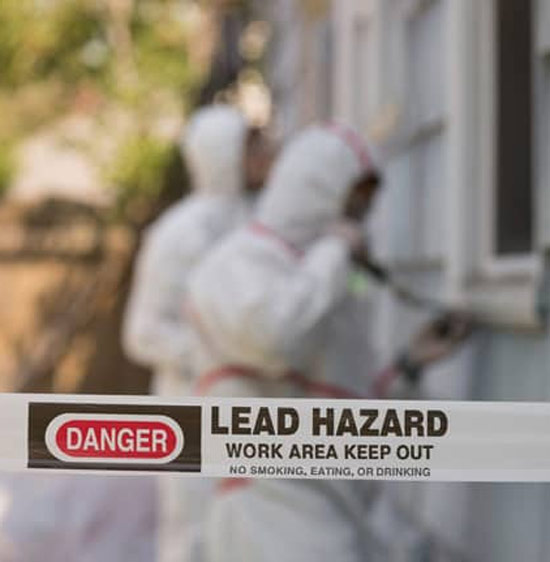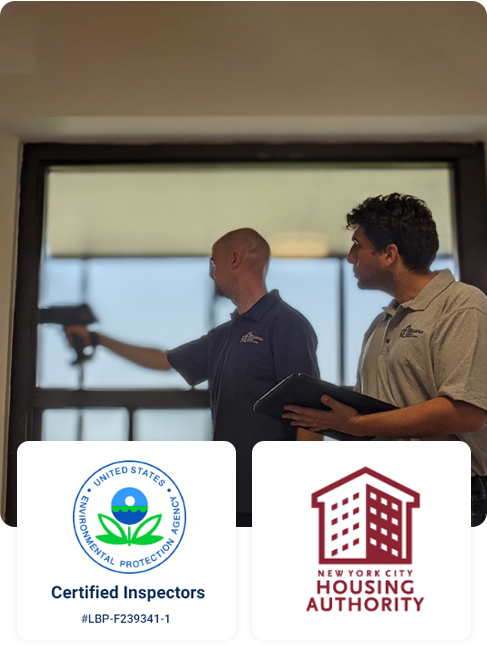Relied On Lead Paint Removal Company-- NYC's Premier Lead Reduction Service
Relied On Lead Paint Removal Company-- NYC's Premier Lead Reduction Service
Blog Article
Step-by-Step Process for Successful Lead Infraction Remediation
Following this, adherence to federal and state regulations is extremely important to developing an efficient remediation plan. The real remediation calls for experienced personnel to implement these strategies while strictly adhering to safety and security methods. What happens after the remediation is finished?

Detection and Evaluation
Discovery and evaluation are essential actions in the removal of lead infractions. To ensure an effective remediation process, it is important to conduct a complete assessment of the environment where potential lead direct exposure exists.
This consists of assessing the level and severity of contamination, as well as recognizing populaces at risk, specifically youngsters and expecting females. The collected data need to be diligently documented to sustain the development of an efficient remediation approach.
In addition, it is important to focus on locations with the highest degree of contamination and those that posture the best health dangers. Efficient communication with stakeholders, consisting of property proprietors, locals, and public wellness officials, is critical for ensuring that all events are informed about the searchings for and the subsequent steps required for removal. This initial discovery and analysis stage prepares for a successful lead infraction remediation procedure.

Legal and Regulatory Compliance
Navigating the landscape of lawful and regulatory conformity is a crucial element of effective lead violation removal. Conformity ensures not only the safety of afflicted populaces yet also the integrity and legal standing of the organization responsible for remediation.
State and neighborhood regulations can differ, typically enforcing added obligations or more rigid criteria. A detailed understanding of all pertinent lawful structures is important. This entails thorough documentation of all removal activities to demonstrate compliance. Failing to stick to these policies can result in severe fines, including substantial penalties, legal action, and reputational damage.
Involving legal professionals focused on environmental regulation can promote navigating these intricacies. Routine training and accreditation for all workers associated with the remediation procedure are also compulsory to make sure adherence to safety and regulative requirements. By prioritizing lawful and regulative conformity, companies can properly minimize threats and achieve an effective removal outcome.
Planning the Remediation
Efficiently planning the remediation of lead violations starts with an extensive evaluation of the infected site. This initial assessment should include a detailed website investigation to determine the level and concentration of lead contamination. Comprehensive sampling and laboratory analysis are paramount to develop an accurate contamination account. This data-driven method guarantees that removal initiatives are suitably targeted and reliable.
As soon as the contamination is mapped, a threat analysis need to be conducted to assess possible health and wellness risks to people and the environment. Lead Violation Removal in NYC. This evaluation should think about aspects such as exposure paths, populace vulnerability, and ecological effects. The understandings collected will certainly create the basis for you could try these out selecting an ideal remediation strategy
Subsequently, establishing clear, attainable objectives for the remediation task is vital. These objectives ought to straighten with regulatory criteria and stakeholder assumptions to make sure conformity and community approval. Establishing a detailed removal plan that outlines methods, timelines, and resource appropriation will certainly assist in a structured technique to the clean-up process.
Moreover, it is important to engage with stakeholders early and maintain clear interaction throughout the preparation stage. This includes informing regional areas, acquiring essential authorizations, and coordinating with governing firms to guarantee all legal and step-by-step requirements are satisfied. A well-crafted removal strategy not just attends to the contamination efficiently however also develops important link count on and participation among all parties included.
Executing the Remediation
With a well-structured remediation plan in area, the focus moves to the actual implementation of the removal tasks. This phase involves activating the needed resources, consisting of competent personnel, specific devices, and premium products. Begin by plainly marking duties and responsibilities to make certain liability and smooth coordination among staff member.
This includes setting up control areas to stop lead dust and debris from dispersing, as well as utilizing air filtering systems to maintain air top quality. Use approaches such as wet scuffing, chemical stripping, or encapsulation, depending on the severity and area of the contamination.
Throughout the removal process, conduct routine inspections and air quality keeping track of to ensure conformity with regulative requirements. Reliable interaction with stakeholders, including residential or commercial property proprietors and occupants, is vital to maintain them informed of progression and any type of unforeseen developments. By diligently following these actions, the removal tasks can be executed successfully and properly, eventually mitigating lead risks.
Post-Remediation Methods
Post-remediation approaches play a critical function in making sure the lasting success of lead infraction removal initiatives. These approaches encompass recurring monitoring, maintenance, and neighborhood education and learning to stop future lead browse around here direct exposure and ensure a risk-free atmosphere.
First, normal surveillance is crucial. This entails periodic testing of the previously affected locations to guarantee that lead levels continue to be within safe restrictions. Homeowner need to establish a schedule for these examinations, preferably in cooperation with licensed environmental specialists.

Third, educating the community plays an essential function in sustaining the benefits of remediation. Homeowners and residential or commercial property managers need to be notified about the threats of lead exposure and the ideal techniques for maintaining a lead-safe setting. Workshops, informative pamphlets, and neighborhood conferences can be efficient tools for distributing this info.
Final Thought
Effective lead violation remediation requires a detailed, organized strategy incorporating discovery and assessment of contamination, adherence to lawful and governing requirements, thorough preparation, and effective implementation of remediation efforts. This systematic procedure underscores the significance of thoroughness and caution in attending to and reducing lead contamination.
Report this page